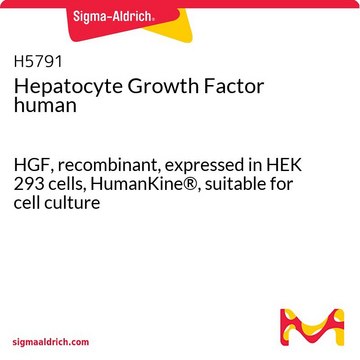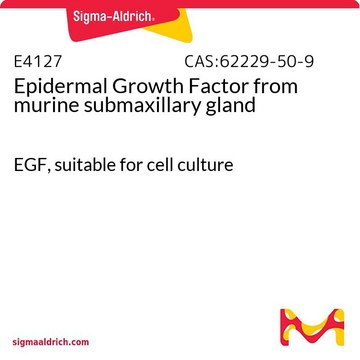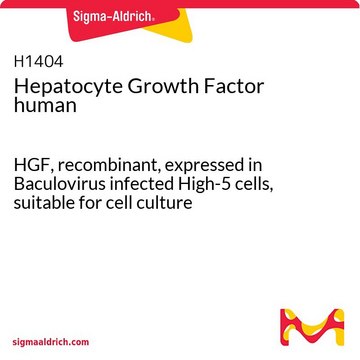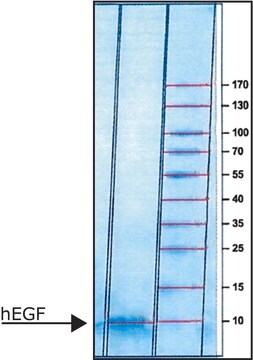GF116
Hepatocyte Growth Factor human
>98% (SDS-PAGE and HPLC), recombinant, expressed in Baculovirus infected High-5 cells, suitable for cell culture
Synonym(s):
HGF
About This Item
Recommended Products
product name
Hepatocyte Growth Factor Protein, Recombinant human, The Human Hepatocyte Growth Factor (or HGF protein) is also known as Scatter Factor & Hepatopoeitin A.
biological source
human
Quality Level
Assay
>98% (SDS-PAGE and HPLC)
manufacturer/tradename
Chemicon®
technique(s)
cell culture | mammalian: suitable
impurities
<0.1 ng/μg Endotoxin (1EU/μg)
input
sample type mesenchymal stem cell(s)
sample type neural stem cell(s)
NCBI accession no.
UniProt accession no.
shipped in
dry ice
General description
GF116 is an 80 kDa disulfide-linked heterodimeric protein consisting of the alpha chain (463 amino acids) and the beta chain (234 amino acids).
Biochem/physiol Actions
Physical form
Storage and Stability
Legal Information
Disclaimer
Storage Class Code
11 - Combustible Solids
WGK
WGK 1
Certificates of Analysis (COA)
Search for Certificates of Analysis (COA) by entering the products Lot/Batch Number. Lot and Batch Numbers can be found on a product’s label following the words ‘Lot’ or ‘Batch’.
Already Own This Product?
Find documentation for the products that you have recently purchased in the Document Library.
Our team of scientists has experience in all areas of research including Life Science, Material Science, Chemical Synthesis, Chromatography, Analytical and many others.
Contact Technical Service








